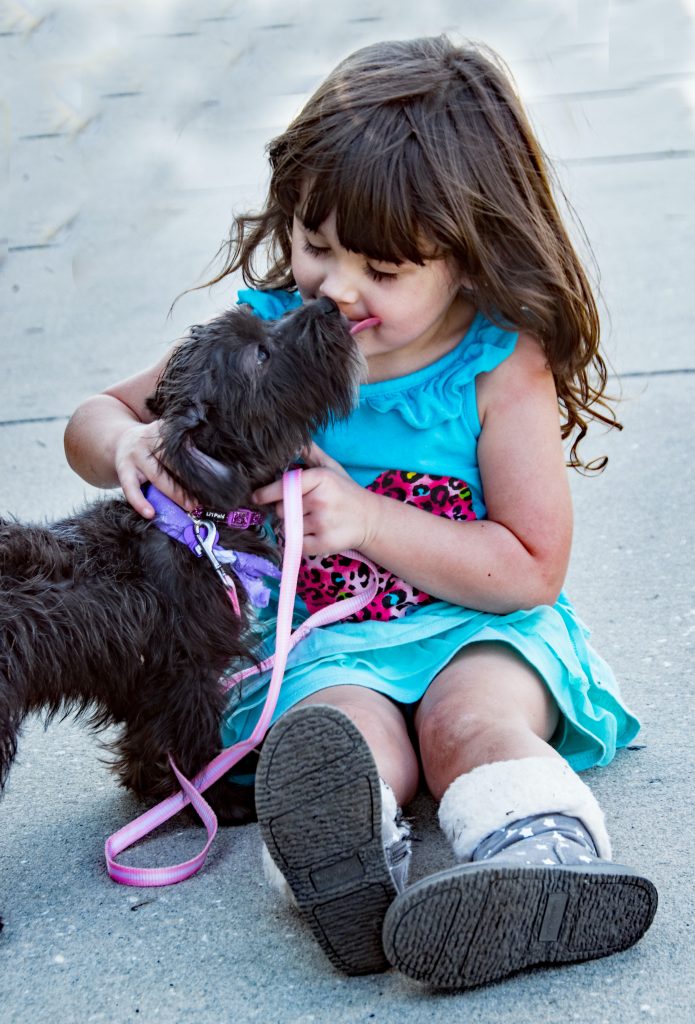Disclosure: This is a SPONSORED CONTENT, but we believe the topic is highly relevant to our users and can also contribute interesting information and curiosities for people and their families.
Science proves: having a pet at home early is good for children’s physical and emotional development

Fathers and mothers who had pets in childhood know how remarkable these companions are. Besides creating unforgettable memories, contact with pets can make a child have a longer, healthier and happier life. Check out below some of the benefits already demonstrated by studies and prepare yourself with the arrival of the dog, cat or other pet at home.
Strengthening the immune system
In the old days, it was thought that dogs and cats could trigger allergies in children. But today it is known that the story is totally different: coexistence can protect children from infections and even reduce the risk of asthma and atopic dermatitis, two diseases that they suffer in childhood.
It is not yet known why the animal stimulates the immune system, but it is believed that there is a kind of “training” for the defenses to learn how to deal with external agents like dust, hair, etc. Some research also indicates that there may be an influence on the composition of the intestinal microbiota, the set of microorganisms that live in the intestine and that is important for defenses.
The influence is such that some studies link exposure to animals still in gestation to a lower risk of these diseases, which are related to an imbalance of the immune system.
Brain stimulation
The first two years of life are fundamental to brain development. The more stimulation, the more connections are formed between the neurons. The relationship with animals makes children try several times to perform the same activity, which improves motor skills.
Emotional development
There are so many benefits studied that it is even difficult to select just one. Skills such as self-control, socialization and affective capacity are some of the best known positive aspects. Now, having a companion teaches how to interpret the feelings and needs of another being, which helps to work empathy, besides stimulating non-verbal communication and caring for others.
They are therapeutic
Children with physical and neurological disorders benefit greatly from living with pets. It is not for nothing that it is part of the therapeutic follow-up of several conditions, such as autism, and Animal Assisted Therapy (ART) is a specific methodology with this focus.
If they do not act directly in the improvement of symptoms, they can be at least a tool to help in the treatment, especially of older children. For example, a 2016 study showed that children and adolescents with type 1 diabetes would control their blood glucose better if they had a pet at home. This is because of the sense of responsibility given to pet care, which can stimulate them to take medicine in the right way – in this case, insulin.
Teaches life values
Having a relationship with an animal is a way to convey important lessons to the child about birth, reproduction, accidents and other remarkable events. When a pet dies or is lost, they have contact with grief, which will be useful in future sad events of life.
Apart from that, as the child grows and gains age-appropriate tasks in pet care, it also learns notions of responsibility.

Stress control
Yes, stress can also affect children, especially in our everyday life. And dogs, cats and other animals can help to relax and calm the child. One of the theories to explain this is that by petting, the body releases hormones such as oxytocin, linked to the establishment of bonds and a better psychological and physiological response to stress.
The U.S. Centers for Disease Control (CDC) has published a study showing that having an animal at home can decrease the risk of childhood anxiety.
More physical activity
That one’s worth more to the dogs. Taking the mascot for a walk or playing with him is a great way to move, in a world that is concerned about the levels of sedentariness in young people and the increased incidence of childhood obesity. The more involved the child is with the animal, the greater the chances of the child being active.
Less risk of obesity
In addition to frightening the sedentary, science studies whether pets could have more influence on the prevention of childhood obesity. A finding in this regard was made in 2017 by the University of Alberta, Canada.
When investigating the intestinal microbiota of 700 babies, the researchers discovered that those who lived with at least one pet during pregnancy had twice as many Oscillospira in their intestines. This bacteria is linked to the risk of gaining weight.
Necessary care
However, until the age of seven parents should supervise the interaction between children and pets. Taking care of hygiene, fleas and ticks, making regular visits to the vet and washing hands after contact are other recommendations to be followed.
The Urban Pet
Products/Services: Premium Foods, Grooming, Clinics, Training
LOCATION:
Address: 7515 Beverly Blvd, Los Angeles, CA 90036
Phone: (323) 933-2100
Website: www.theurbanpet.net
